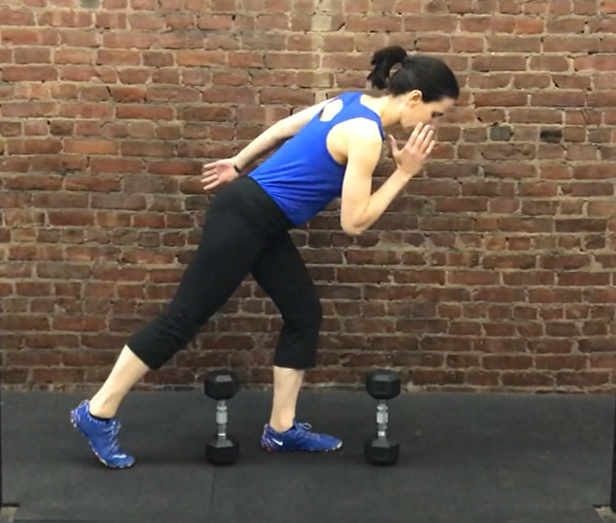Building single leg strength is important during pregnancy to help prevent gait changes (AKA the pregnancy “waddle”), and also to assist you in maneuvering through life with an extra 25 – 35 lbs (or more) of body weight. It’s also important if you’re a new parent given the amount of level changes you are constantly performing — like getting up and down from the ground — often while holding a (cute and fragile) load.
However, you do need to be mindful that you may have decreased stability in your pelvic hip region during and after pregnancy due to a combination of hormonal changes and alignment shifts. Therefore, you may feel a bit more “wobbly,” especially when doing single leg activities.
The video series below will help you safely and progressively build lower body strength and stability to help you avoid potential pains or injuries and move with greater ease as you carry more weight (or a heavier child)
Master These Moves
Master the movements below in numerical order. They build on one another, so don’t move onto the next move until you feel comfortable (and stable) doing the previous one.
1. Squat with Back Leg Reach: This is a nice transition move from bilateral work (movements done on two feet like squats) to unilateral work to begin building single-leg stability.
2. Toe Taps Front: After you’ve mastered #1, this movement increases the work on one leg.
3. Toe Taps Front and Back: This is a progression on #2 because it increases the distance your moving leg travels (and the time spent balancing on single-leg).
4. Squat with Side Leg Reach: The above three movements were all front-to-back movements. Now, we increase the challenge by having you begin moving side-to-side.
5. Toe Taps Side to Side: Like #3, this increases the distance your moving leg travels side-to-side, and also increases the time spent balancing on single-leg.
Keep in mind that, while these moves are specifically designed to be tolerated by hips that may be more mobile from the effects of relaxin, they will likely need to be modified — or eliminated altogether — if you are experiencing any type of pelvic pain, like SI Joint Pain.
Want Additional Resources?
For additional resources to help you recover, build strength, and get back to doing what you love, explore our Postpartum Training Programs. Or, for a more personalized approach, visit our Find a Coach page to find an expert trainer who can design and coach you through a customized training program.
Are you a Health & Fitness Professional?
If you are a health & fitness professional interested in coaching pre & postnatal clients, explore our ProNatal Education & Certification.
